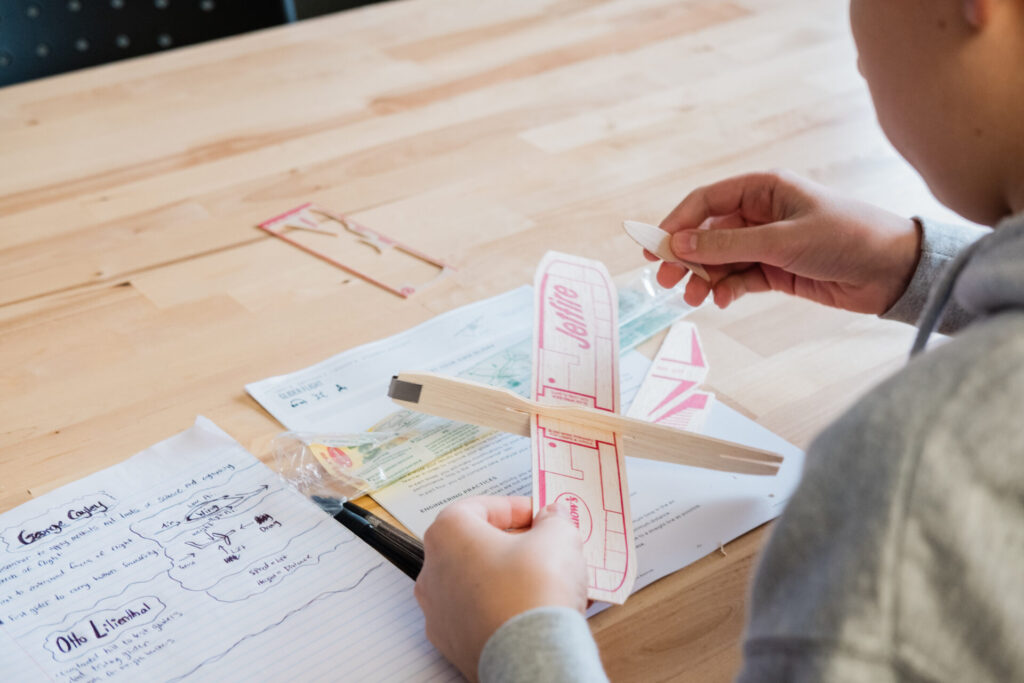- WHAT: Aviation, drones and space exploration are having a moment in southwestern Pennsylvania.
- WHO: In many cases, leaders of these programs are collaborating with industry partners who provide training, access to tools and materials, and sometimes even credentialing.
- WHY: Many are motivated by a wish to diversify fields like commercial aviation, aerospace engineering and other STEM professions. And in some cases, these programs are also helping to reset expectations around career and technical education.



In Pittsburgh these days, it’s not uncommon to meet a high schooler who recently became a licensed drone pilot.
You also might come across a group of middle schoolers who spent the day peering through a huge glass window at a team of engineers assembling an actual lunar spacecraft. Meanwhile, a class of elementary schoolers may have spent the same day discovering career paths in aviation, while also learning the proud history of the Tuskegee Airmen.
Best of all, these programs are leveraging the excitement of flight to engage students in meaningful and rewarding learning experiences.
WHAT ARE KIDS LEARNING? CAREER-READY SKILLS AND BROAD UNDERSTANDING
In aviation class at South Allegheny High School, students begin with a basic introduction to the principles of engineering and design. Long before they begin operating the classroom’s flight simulator, they come to understand the science behind making an object fly.
That’s one of the keys of aviation learning in Pittsburgh: Many of these programs teach the math and science, as well as the iterative process of testing, measuring and refining that goes into aircraft design. So even if students don’t pursue an aviation-related career, they’ve been introduced to engineering and have developed an understanding of the mechanics of flight.
But there’s also a powerful career-learning component. As job opportunities in these fields increase and educational programs expand in K-12 schools and out-of-school settings, aviation programs are growing into a permanent part of Pittsburgh’s learning ecosystem.
Students in the Fly Like a Girl program learn how many industries — from real estate to oil and gas to emergency and military services and more — are now using drone technology, and thus hiring drone pilots. And through visits to Pittsburgh’s Center for Aviation Technology and Training and the new Moonshot Museum, they’re discovering the thriving space exploration industry that’s taking root in Pittsburgh.
WHAT PROGRAMS ARE HELPING LEARNERS TAKE FLIGHT?
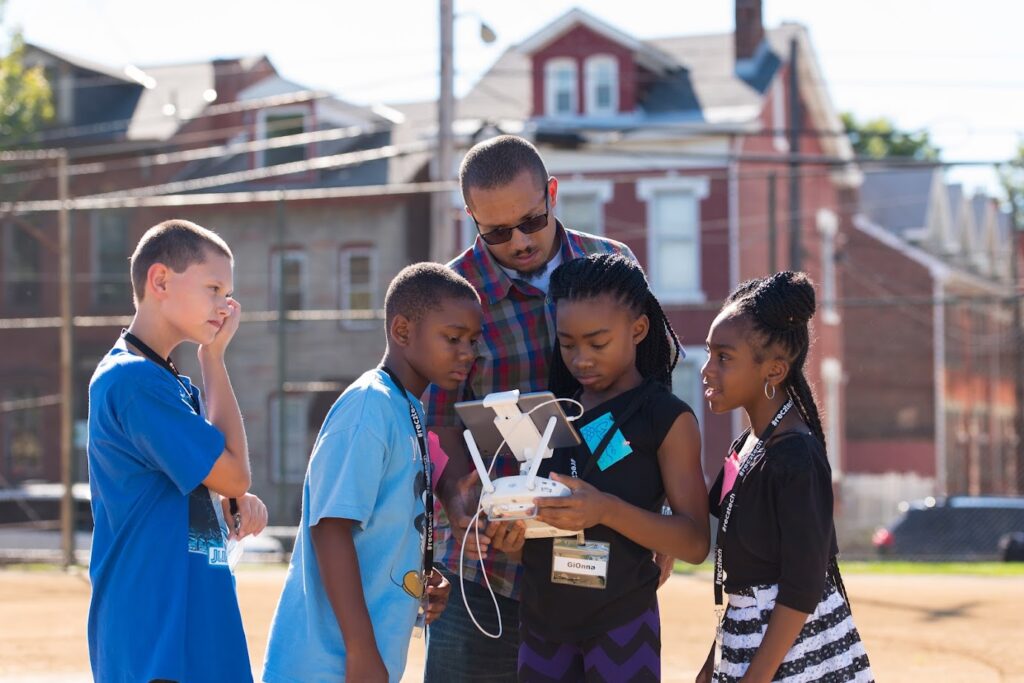
My Block is Beautiful, YMCA Lighthouse Project: A drone-photography project for students to take aerial photos of their neighborhood using drones, and then develop those photos into a multimedia art installation celebrating their community. Developed as a 20-week project, this curriculum can be shortened or extended and is available to be shared with other after school and in-school programs.
<<PHOTO TK>>
Fly like a Girl, Baldwin-Whitehall School District: This drone pilot training program led by educators and students from Baldwin-Whitehall, Beaver Area and South Fayette Township school districts, has also welcomed students from Ambridge and McKeesport school districts. Funded by a Moonshot grant from Remake Learning, the program prepares students who are 16 or over to take the FAA’s Part 107 Exam to become licensed drone pilots. In the process, students learn about drone-related careers and about the science and engineering that makes drone technology possible.
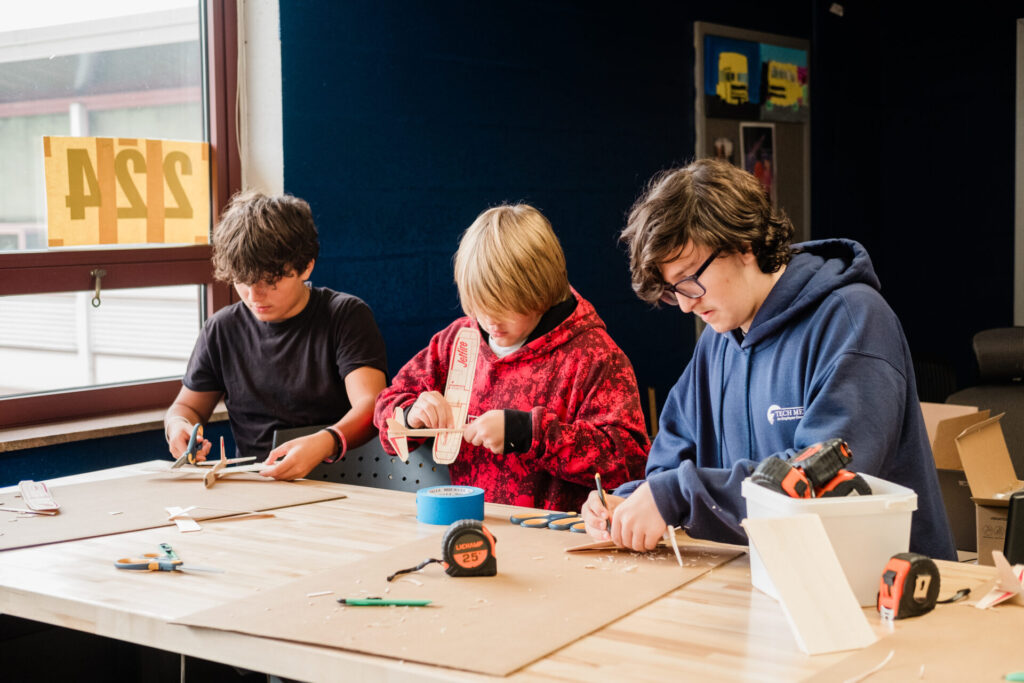
Taking Off at South Allegheny School District: This full-year elective course is built from a free curriculum designed by the Aircraft Owners and Pilots Association. For the first time, it’s being offered this year at South Allegheny – one of only 10 schools in Pennsylvania to teach this curriculum. The school was able to buy a flight simulator through a Moonshot Grant funding. With that technology now in place, the hope is that the program will grow to include all four years of the AOPA curriculum and in the process it will help diversify the industry of commercial aviation.
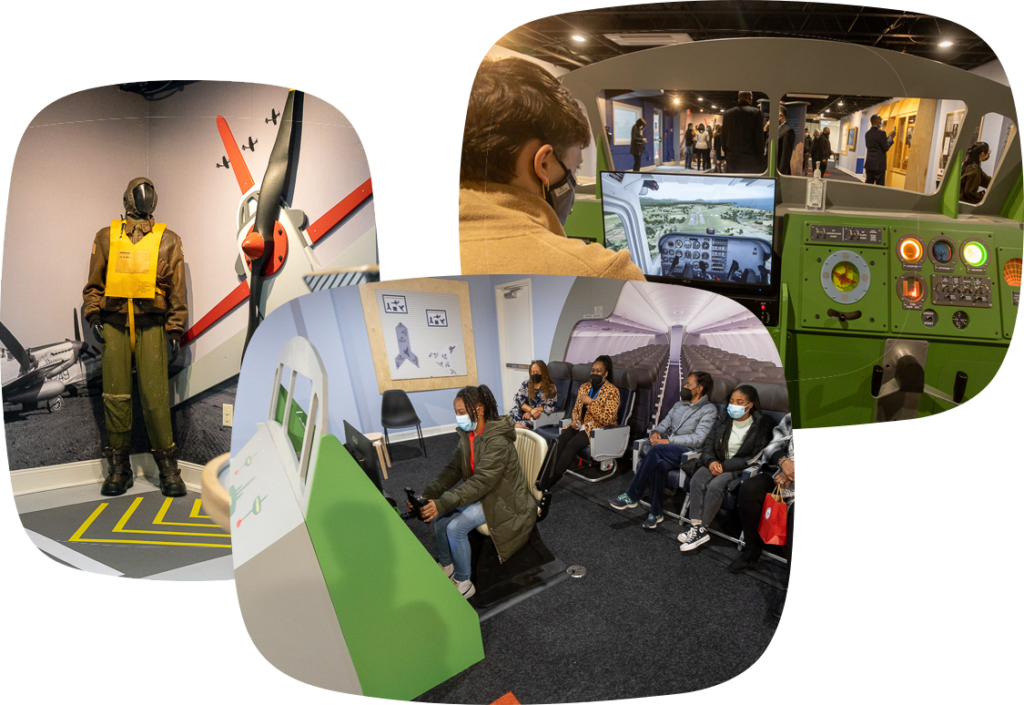
Center for Aviation Technology and Training (CATT): The Center for Aviation Technology and Training, located along with the Tuskegee Airmen Museum at the Sherwood Event Center in Wilkinsburg, offers interactive exhibits and learning opportunities for school groups and families. Created in partnership with the Children’s Museum of Pittsburgh, and run by Hosanna House, the CATT has a flight simulation program where older teens can learn what it’s actually like to train to be a pilot. Younger students can try the flight simulator in an exhibit cockpit.
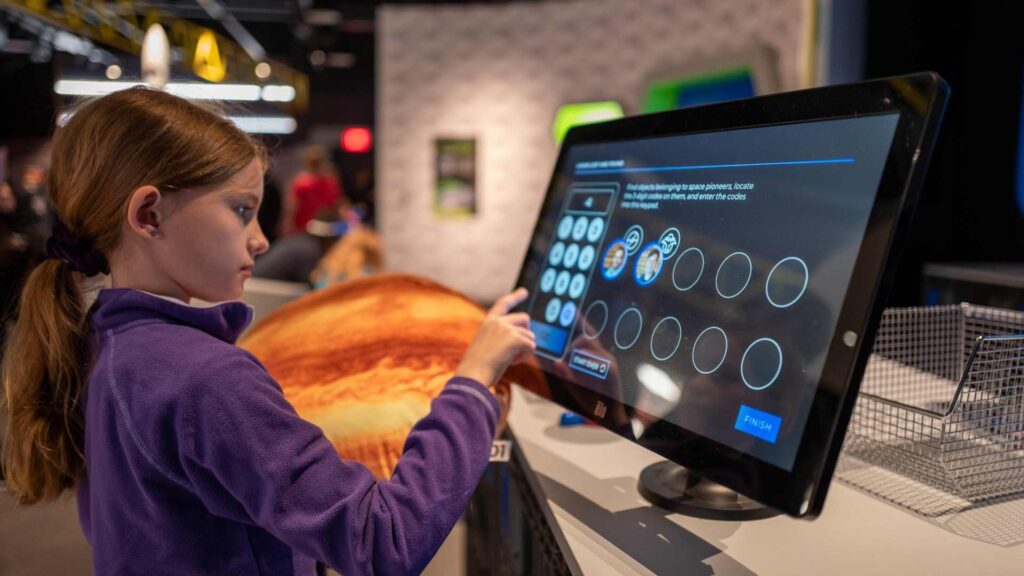
The Moonshot Museum: The space technology firm Astrobotic opened the Moonshot Museum last fall on Pittsburgh’s the North Side to showcase the history of lunar exploration and teach about the cutting-edge work they’re doing today to launch payloads to the moon’s surface. Beyond visits to the museum, students also learn through visits from the Mobile Moonshot program.
WHY NOW?
Why have these kinds of learning experiences gained traction in recent years? Factors include lower costs for equipment, an increase in the ubiquity of drones and the growth of the aviation and space industries in the Pittsburgh region.
But beyond all of these practical factors is the role of people: Teachers who have a personal passion for flying and aerospace technology are bringing their excitement to their classrooms.
WHAT CHALLENGES FACE AVIATION LEARNING?
One challenge is broadening access to aviation learning. Although prices have come down, not every school or OST program will have comparable equipment. Drone prices, for example, can range from $50 to several thousand dollars.
In addition to cost, spreading the word and sharing resources is complicated. The Fly Like a Girl team hopes to eventually create a shareable curriculum for drone licensing and the My Block is Beautiful drone photography program is available for downloading. Rishel is also spreading the word in order to let more districts know about AOPA’s free flight training curriculum.
“Last year only five districts in the state of Pennsylvania were taking advantage of the AOPA curriculum. That number has jumped to 10,” Rishel says. “Hopefully other districts will see that opportunity and take advantage of it.”
Another challenge: finding teachers with the knowledge to offer solid aviation learning.
“It’s tough to find a world language teacher right now or a chemistry teacher or a physics teacher, let alone something as niche as aviation,” says Dr. Janeen Peretin, who co-founded Fly Like a Girl.
To grow their own skills, many teachers in these new programs are busy learning along with their students. “We have at least one person from each district who worked alongside the girls this summer,” Peretin says, “who would also like to sit for the exams this fall.”
Rishel, who teaches South Allegheny’s aviation course, is a licensed pilot. He got trained in the AOPA curriculum in order to support his students this year.
In the past, aviation programs have grown out of one teacher’s passion. Now it’s time for the commitment to these valuable programs to grow beyond the passion project of a single educator.
“I know that there was a teacher in the Pittsburgh city schools who for 20 years had an aviation program. I’m not sure in which school it was, but when they retired then that program ended,” Rishel says. “Not that I’m retiring anytime real soon, but in five or seven years I will be looking at that. We want to have this thing established, so that it can outlive me.”
Authored by

Melissa Rayworth
Melissa Rayworth has spent two decades writing about the building blocks of modern life — how we design our homes, raise our children and care for elderly family members, how we interact with pop culture in our marketing-saturated society, and how our culture tackles (and avoids) issues of social justice and the environment.
